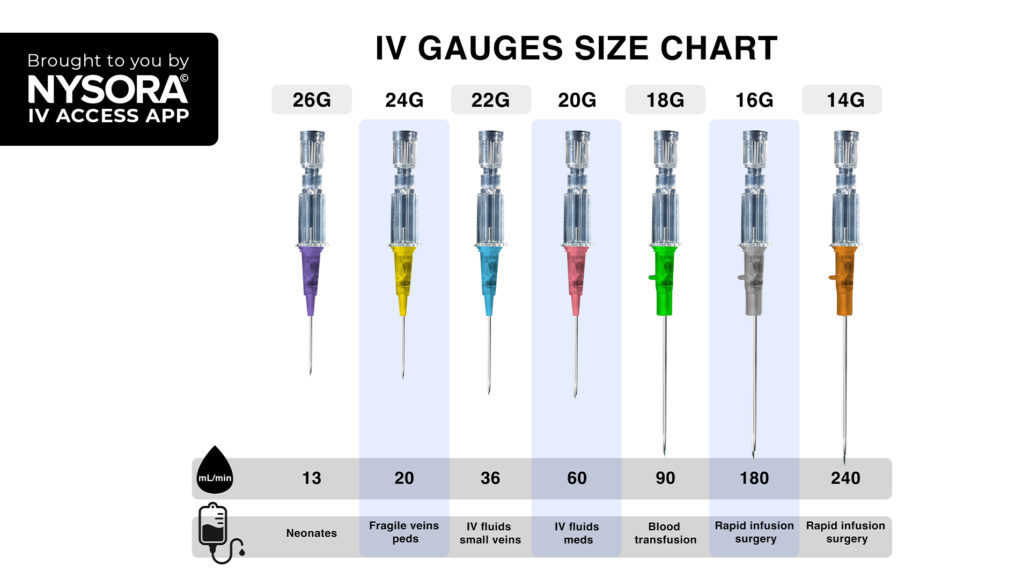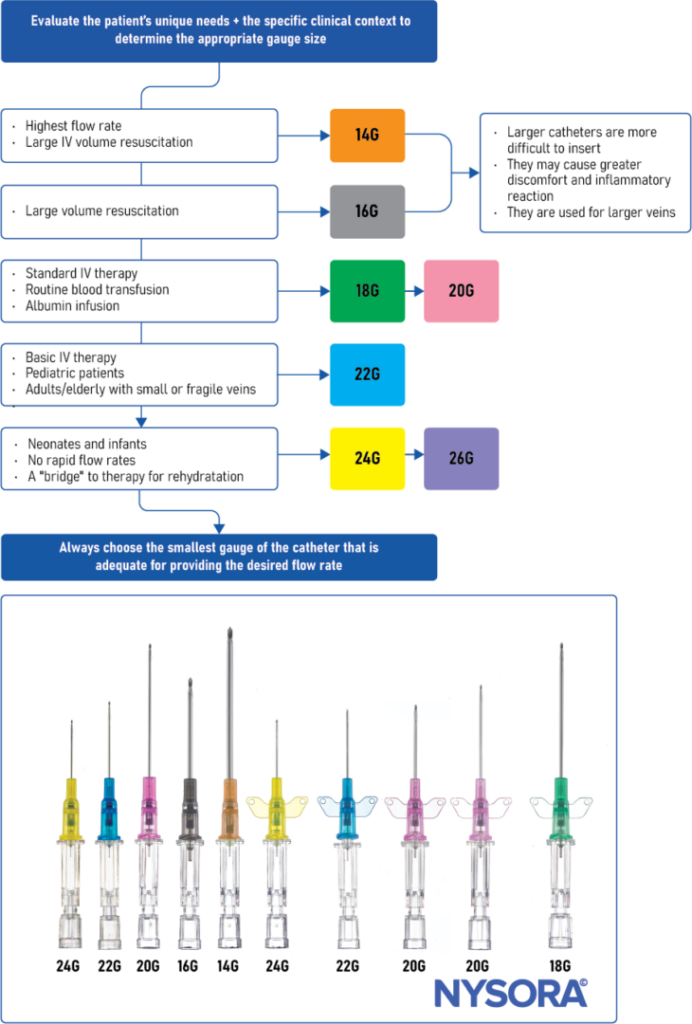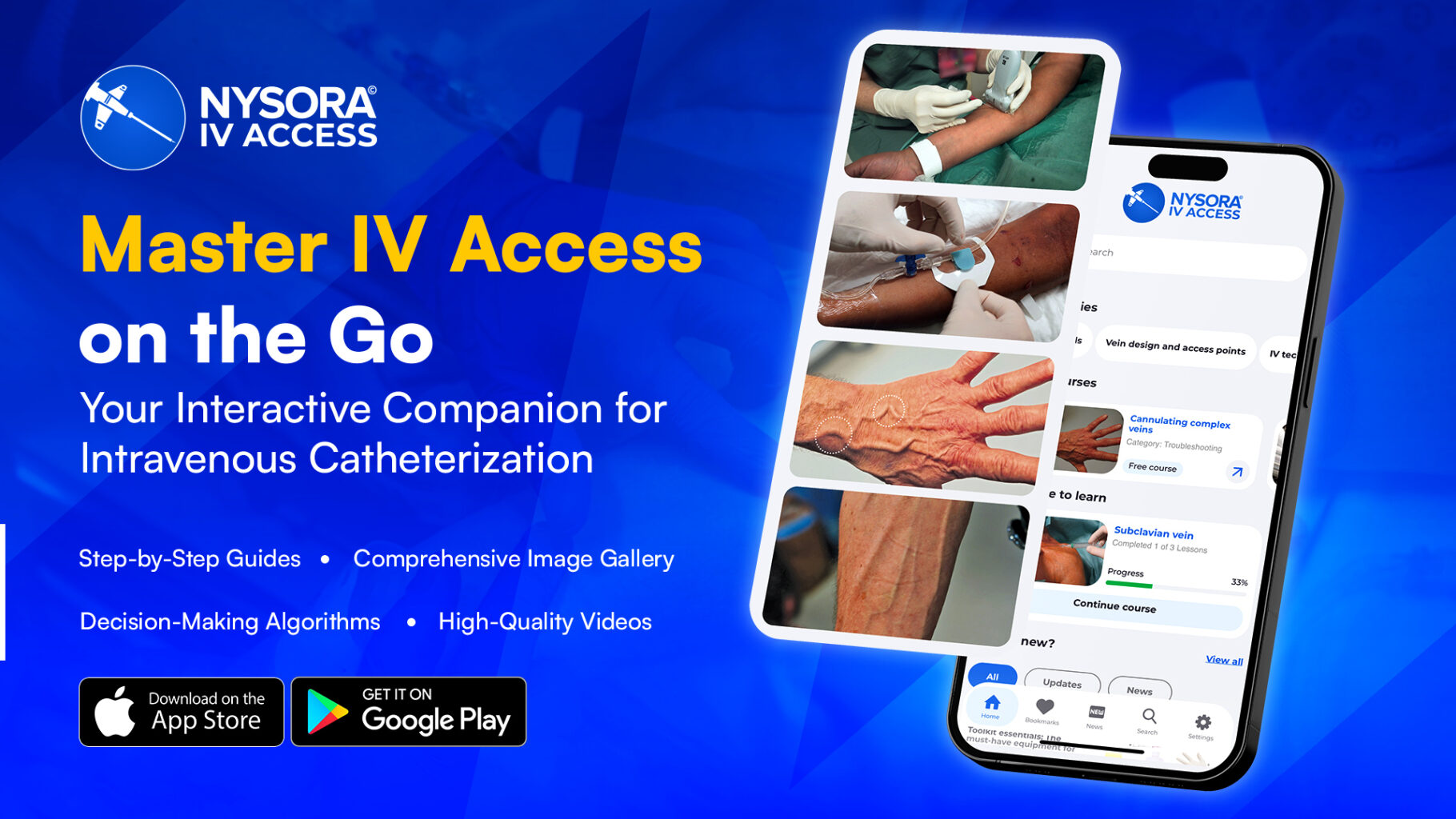
Mastering IV Catheter Gauge Selection
Selecting the appropriate IV catheter gauge is crucial, impacting fluid administration and patient outcomes. Beyond basic knowledge, an advanced understanding of gauge selection can significantly enhance clinical practice, ensuring optimal treatment efficacy and patient comfort across various medical scenarios.

14-16 G: High-Flow Requirements in Critical Scenarios
- Essential for major trauma or massive transfusion protocols.
- High flow rates of up to 330 mL/min are crucial for rapid volume resuscitation.
- Balance swift fluid delivery against potential vascular trauma.
- Consider challenges in hypovolemic patients with difficult venous access.
18 G: Balancing Flow Rate and Patient Comfort
- Delivers approximately 90 mL/min, versatile in elective and emergency settings.
- Optimal for blood products and hypertonic solutions.
- Monitor for complications such as phlebitis, especially in prolonged procedures.
- Ensure precise placement and securing to minimize risks.
20 G: Versatility in Perioperative Management
- The typical infusion rate of 65 mL/min is suitable for most perioperative needs.
- Consider the viscosity of drugs and the potential need for higher flow rates.
- Adjust the gauge for significant hemodynamic instability.
22-24 G: Specialized Applications in Vulnerable Populations
- Preferred for pediatric, geriatric, or oncology patients due to reduced vascular injury risk.
- Flow rates are around 38 mL/min (22 gauge) and 20 mL/min (24 gauge).
- Ideal for delicate veins, requiring meticulous insertion techniques.
- Continuous monitoring to prevent extravasation and infiltration, especially with vesicant drugs.
26 G: Neonatal Care
- Specifically designed for neonates with very small veins.
- Ensures minimal vascular trauma and improved patient comfort.
- Flow rates are significantly lower, around 13 mL/min, but adequate for neonatal needs.
- Requires exceptional precision in insertion and securing due to the delicate nature of neonatal veins.
VIDEO:

Potential Complications from Incorrect Catheter Size
Using the wrong size catheter can lead to a variety of complications, including:
- Vascular Trauma:
- Larger gauges can cause damage to smaller veins, leading to bruising, hematoma, or vessel rupture.
- In neonates and pediatric patients, overly large catheters increase the risk of vascular injury.
- Infiltration and Extravasation:
- Smaller catheters may be insufficient for rapid fluid delivery, causing fluid to leak into surrounding tissues.
- Infiltration can lead to swelling, pain, and tissue damage, particularly with vesicant drugs.
- Phlebitis and Infection:
- Improperly sized catheters can cause mechanical irritation and inflammation of the vein (phlebitis).
- Increased risk of infection due to improper catheter size causing repeated attempts at insertion.
- Compromised Fluid Administration:
- Smaller catheters may not deliver fluids quickly enough in emergency situations, delaying critical treatment.
- Overly large catheters may not be necessary for routine procedures, leading to unnecessary discomfort and risk.
- Patient Discomfort and Anxiety:
- Larger catheters can cause significant pain and anxiety, especially in sensitive or pediatric patients.
- Frequent catheter changes due to incorrect initial selection can increase patient discomfort and reduce trust
Explore many resources, including easy-to-follow algorithms, expert tips, and clinical videos on NYSORA’s IV Access App. It’s perfect for healthcare professionals at any level, download today and start improving your IV catheterization techniques! All this valuable content is also available in NYSORA’s comprehensive IV manual on Amazon.




